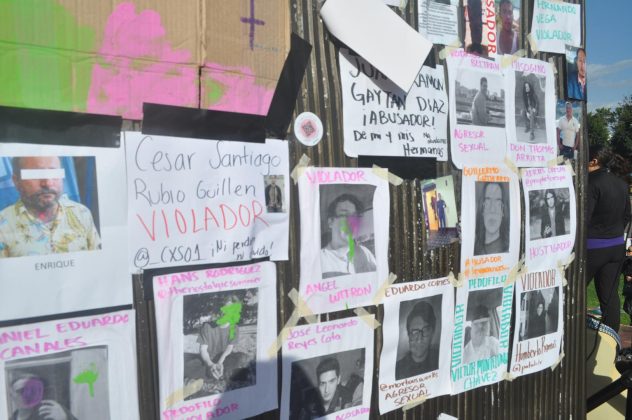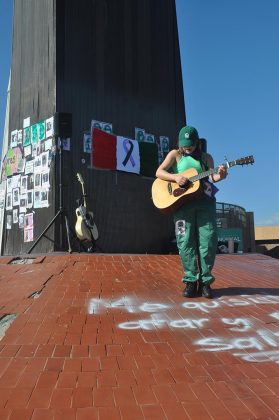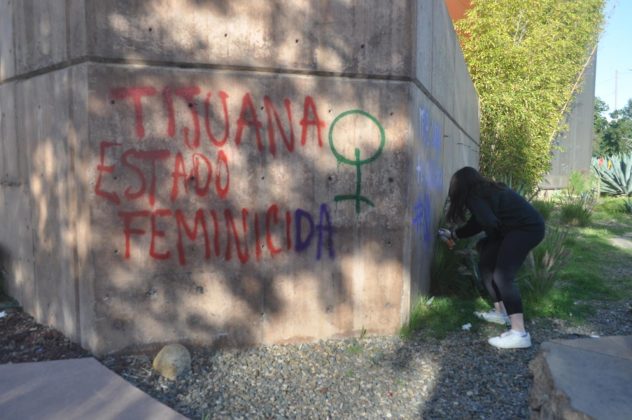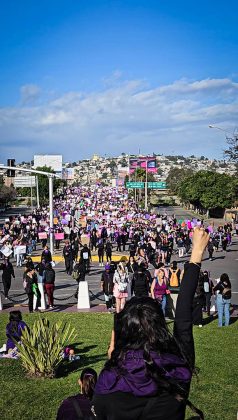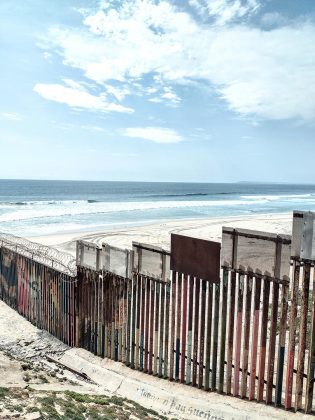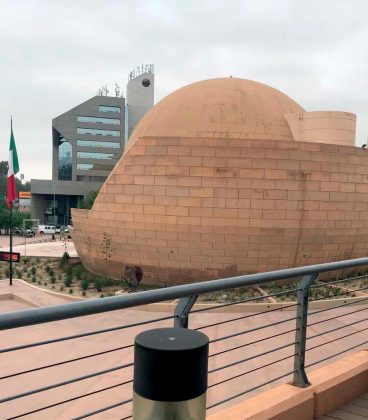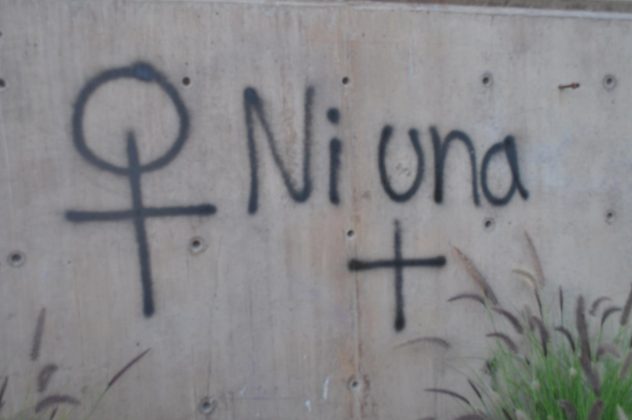The protest song Canción Sin Miedo, by Vivir Quintana, brought energy to the beginning of the Women's March gathering in Tijuana, Mexico, on March 8th. In the voice of local singer Giuliana, guitar in hand, the composer's blunt message resonated like a call. With verses like “every minute, every week / they steal our friends, they kill our sisters / They destroy their bodies, they disappear”, Quintana denounces the injustices and violence faced by women. Her music is a call to action and memory, calling on politicians and society to recognize and combat this brutal reality. Giuliana says she is outraged and is marching for the right to life, for the tireless search for children who disappear every day, for women who are silenced and for those who have already lost their lives. “Here people commit crimes and just get away with it, no one is held accountable.” Quintana's song is a warning letter to the population and, therefore, has become an anthem present in several demonstrations.
At another point in the concentration, I find a firm and decisive voice: the activist and theater actress, Adriana Millanés, who is an integral part of the Manos Entrelazadas Foundation. This institution has been tirelessly dedicated to preventing child sexual abuse and intra-family violence for 17 years. Adriana, with unwavering determination, highlights: “Those who deny the existence of this problem are, without a doubt, accomplices to discrimination and violence against women”. She shares an alarming statistic: 1.426 women went missing in just the first two and a half months of this year. On a significant day for the demonstration, such as International Women's Day, she highlights that people are on the streets because they no longer accept this situation. However, she laments that the next day, March 9, everything will remain unchanged, highlighting the ongoing crisis facing women in Mexico. After the march, Adriana Millanés goes to her work, taking the stage at Antiga Bodega de Papel, a renowned local theater, where she performs in Eve Ensler's iconic play, The Vagina Monologues. So, after fighting on the streets, she continues her mission of awareness and empowerment through art.
I talk to Ana Hernandez, an elementary school teacher who says she hopes that, this year, Mexico will have a president who will reduce violence in the country. “It’s a special moment in our lives, I believe in a woman’s determination and her commitment to fulfilling her promise.” The election is scheduled for June 2 and the former mayor of Mexico City, Claudia Sheinbaum, leader with 50,5% of voting intentions, from the same party (Morena) as President Andrès Manuel López Obrador, is in the running. And senator Xóchitl Gálvez, with around 28,8% of voting intentions. The only man is Jorge Álvarez Máynes, with no chance in the competition with just 4,8% of voting intentions.
Tijuana faces a significant challenge: the constant flow of a population on the move, crossing the city in a desperate attempt to clandestinely cross the border. Many seek employment in the Maquiladoras, industries that hire workers for flexible periods – an hour, a week or a month – depending on demand. It is a frenetic dance of opportunities and uncertainties, where some settle temporarily, while others insist on the search for the much-desired success in crossing the border. These individuals, rooted in hope, build a vibrant and diverse community in Tijuana. With its 130 years of history, Tijuana stands out as a pulsating center, home to an impressive population of three million inhabitants.
Men do not participate in the March, they are intimidated by their safety. A photo reporter was hit by protesters with paint and had to leave. Overall, the demonstration was controlled, although a group of women dressed in black, with their faces covered, carried hammers and baseball bats in their hands. With slogans, among others, “We are bad and we can be worse”, “Not one more”, the movement fulfilled its purpose. One of the impactful feats was the exhibition of photos and photocopies, in the Tijeras (scissors) square, of the faces of rapists, aggressors and exploiters, whose list included teachers, priests, politicians, and relatives of the victims.
Even with its problems, Tijuana attracts Mexicans from other states and Latin Americans from several countries. Ranked as the second most populous metropolis in Mexico, it is considered the gateway to Latin America. Like a scar that doesn't close, the city is cut by a wall of more than 700 kilometers that divides and crosses other cities. While bathers try to relax on Tijuana beach, the abominable wall rises imposingly, dominating every angle of the landscape and advancing through the sand for more than a hundred meters towards the sea.
Unlike what happened on the coast in East Germany, during the Cold War, where armed guards carrying powerful binoculars observed everything, in Tijuana surveillance is practically monitored by drones. Part of the wall was built or restored during Donald Trump's administration, and other sections were built in 1991.
In recent decades, the Mexican government has implemented an ambitious cultural project, aiming to alleviate Tijuana's negative stigma and also present it as a city dedicated to the arts. Among other initiatives is the Salão Internacional de Estandarte (1996), designed by Marta Palau, who participated in the 19th São Paulo Biennial in 1987, and later transformed it into a Biennial. Still with this purpose comes InSITE, an international exhibition created by the Intersection Gallery in San Diego, California and which took place simultaneously at the Tijuana Cultural Center (Mexico), built with a bold project, within this restructuring program, and opened in 1982. In the opinion by Roberto Rosique artist, critic, professor and member of the curatorial board of the Tijuana Triennale, InSITE was driven by the business vision of Michel Krichman and Carmen Cuenca, with resources from the National Council for Culture and the Arts (Conaculta), in addition to businesspeople from the North -Americans. To legitimize the project, international artists and curators were invited. Brazilian critics Adriano Pedrosa, curator of the Venice Biennale 2024, and Ivo Mesquita, former director of the Pinacoteca do Estado, were curators of this event in different editions.
With the aim of fostering and promoting local art, in addition to stimulating international exchange in the city, Álvaro Blancante, a renowned Mexican art critic, was one of the visionaries in the conception of the Tijuana Triennale: 1. International Pictorial, 2021. Although not witnessed its completion, having passed away in 2021, the project flourished. The second edition, which is being worked on under my general curatorship, will open on July 26th this year. The event will feature the presence of established and emerging artists helping the Tijuana Triennial to consolidate itself as an important milestone in the region's cultural calendar, reaffirming the city's commitment to celebrating and promoting art in all its forms, with the participation of artists representing 15 different countries.



